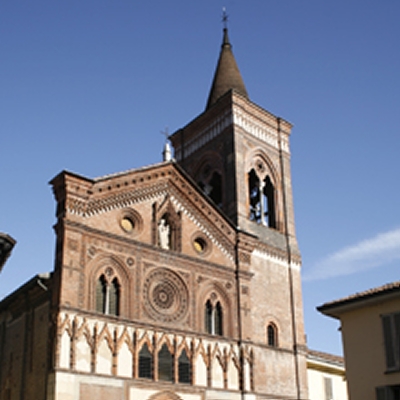Chiesa Santa Maria in Strada
In 1384 a pre-existing building along the paved road (strata) connecting the centre of Monza and Milan was entrusted to the Friars Minor Tertiaries of St. Francis of Penance who were to establish the first oratorium that was consecrated in 1357 and later became the Church of Santa Maria in Strada. Further work carried out on the facade probably came to an end in 1368. The church had a very simple structure made up of a single nave with an A-frame ceiling.
In 1393 the tertiaries joined the Order of Saint Augustine from Milan. In 1421 the polygonal apse and the sacristy were added to the church. The facade, which contains a stone statue of the Virgin and Child, was then restyled and it is a commendable example of Lombard gothic architecture decorated with tiles.
TowArds the middle of the 14th century the inside of the church was decorated with frescoes, which preceded the international gothic pictorial style. Today two of these frescoes - particulars of an Annunciation - are kept in the Museum and Treasury of the Cathedral where the original Virgin and Child is kept too, whereas the Santa Maria di Strada version is a copy. In 1610 St. Charles Borromeo ordered that the vault be turned into a barrel vault and the choir vault be covered with render. Further renovations were carried out afterwards.
At the beginning of the Napoleonic era the convent and the church were closed. The first became an educational institute after a series of events, the second became a place of worship once again and was renovated from 1870 by the architect Carlo Maciachini, who integrated and refined the facade and completed the belfry.
For information and guided tours phone 039.326383
Contact info
- Via Italia 20900 Monza
- Lat 45.58231110884725, Long 9.273939609527588
- +39 039 323222
- http://www.museoduomomonza.it/Pages/Percorsi/Default.aspx?id=365&mid=24

